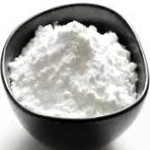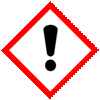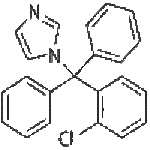CAS Number 23593-75-1, Clotrimazole USP IP BP Ph Eur EP Grade Manufacturers Exporters







CAS Number 23593-75-1, Clotrimazole USP IP BP Ph Eur EP Grade Manufacturer Exporter
For Properties Specifications of Clotrimazole USP IP BP Ph Eur EP Grade Click Properties, Specifications of Clotrimazole Manufacturer.
For Uses of Clotrimazole USP IP BP Ph Eur EP Grade Click Uses of Clotrimazole Manufacturer.
For For SDS MSDS Sheet of Clotrimazole USP IP BP Ph Eur EP Grade Click SDS Safety Data Sheet MSDS Sheet of Clotrimazole Manufacturer.
The Properties and Specifications of Clotrimazole USP IP BP Ph Eur EP Grade:
Clotrimazole USP Grade Specifications:
C22H17ClN2 --- 344.84
1H -Imidazole, 1-[(2-chlorophenyl)diphenylmethyl]-;
1-(o-Chloro-α,α-diphenylbenzyl)imidazole CAS 23593-75-1
UNII: G07GZ97H65
DEFINITION
Clotrimazole contains NLT 98.0% and NMT 102.0% of C22H17ClN2, calculated on the dried basis.
IDENTIFICATION
A. Infrared Absorption.
B. The retention time of the major peak of the Sample solution corresponds to that of the Standard solution, as obtained in the Assay.
Residue on Ignition: NMT 0.1%
Limit of Imidazole: To pass the test.
Limit of Clotrimazole Related Compound A: To pass the test.
Loss on Drying: Dry a sample at 105C for 2 h: it loses NMT 0.5% of its weight.
Packaging and Storage: Preserve in tight containers.
Clotrimazole BP Ph Eur Grade Specifications:
C22H17ClN2 --- 344.8 CAS 23593-75-1
Action and use: Antifungal.
DEFINITION
1-[(2-Chlorophenyl)diphenylmethyl]-1H-imidazole.
Content: 98.5 per cent to 100.5 per cent (dried substance).
CHARACTERS
Appearance: White or pale yellow, crystalline powder.
Solubility: Practically insoluble in water, soluble in ethanol (96 per cent) and in methylene chloride.
IDENTIFICATION
First identification: B
Second identification: A, C
A. Melting point: 141C to 145C.
B. Infrared absorption spectrophotometry.
C. Thin-layer chromatography.
TESTS
Related substances: To pass the test by Liquid chromatography.
Loss on drying: Maximum 0.5 per cent, determined on 1.000 g by drying in an oven at 105C.
Sulfated ash: Maximum 0.1 per cent, determined on 1.0 g.
Storage: Protected from light.
We also supply Clotrimazole Powder as per EP Grade.
The Uses of Clotrimazole USP IP BP Ph Eur EP Grade:
Clotrimazole is a medication used in the management and treatment of fungal infections. Clotrimazole is used to treat skin infections such as athlete's foot, jock itch, ringworm, and other fungal skin infections.The MSDS-SDS Hazard Statement of Clotrimazole USP IP BP Ph Eur EP Grade:
Clotrimazole SDS GHS, Safety Data Sheet
MSDS Sheet, Material Safety Data Sheet 02-Nov-24
1. Product Identification
Product Name & Other Names: Clotrimazole.
CAS No.: 23593-75-1
EINECS EC No.: 245-764-8
Molecular Formula: C22H17ClN2
Molecular Weight: 344.84
Relevant uses and uses advised against (if any): Industrial Manufacturing.
Suppliers: As per letterhead.
2. Hazards Identification
GHS, Globally Harmonized System Classification in accordance with 29 CFR 1910
Hazard Class and Category Code(s), Regulation (EC) No 1272/2008 (CLP):
Acute toxicity, Category 4, Oral, H302
Skin irritation (Category 2), H315
Eye irritation (Category 2), H319
Labeling according to Regulation (EC) No 1272/2008
GHS Label Elements  Irritant |
Signal Words: Danger
Hazard statements:
H302: Harmful if swallowed.
H315: Causes skin irritation.
H319: Causes serious eye irritation.
Precautionary statements:
P210: Keep away from heat/sparks/open flames/hot surfaces – No smoking.
P233: Keep container tightly closed.
P261: Avoid breathing dust/fume/gas/mist/vapors/spray.
P264: Wash --- thoroughly after handling.
P270: Do not eat, drink or smoke when using this product.
P271: Use only outdoors or in a well-ventilated area.
P273: Avoid release to the environment.
P280: Wear protective gloves/protective clothing/eye protection/face protection.
P301+310: IF SWALLOWED: Immediately call a POISON CENTER or doctor/physician.
P304+340: IF INHALED: Remove victim to fresh air and keep at rest in a position comfortable for breathing.
P305+351+338: IF IN EYES: Rinse cautiously with water for several minutes. Remove contact lenses if present and easy to do – continue rinsing.
3. Composition/Information on Ingredients
Product Name & Other Names: Clotrimazole.
CAS No.: 23593-75-1
EINECS EC No.: 245-764-8
4. First Aid Measures
Always seek medical attention after first aid measures are provided.
Inhalation: Remove to fresh air. If not breathing, give artificial respiration. If breathing is difficult, give oxygen. Get medical attention.
Ingestion: Never give anything by mouth to an unconscious person. Get medical attention.
Skin Contact: Wipe off excess material from skin then immediately flush skin with plenty of water for at least 15 minutes. Remove contaminated clothing and shoes. Get medical attention. Wash clothing before reuse. Thoroughly clean shoes before reuse. Get medical attention.
Eye Contact: Immediately flush eyes with plenty of water for at least 15 minutes, lifting lower and upper eyelids occasionally. Get medical attention immediately.
5. Fire Fighting Measures
Flammability of the Product: Combustible. Forms explosive mixtures with air at ambient temperatures.
Products of Combustion: Carbon dioxide, Carbon monoxide, Chlorine compounds, Nitrogen oxides, and fumes.
Fire Extinguishing Media: Use water spray or fog. Vapors are heavier than air and may travel to a source of ignition and flash back. Vapors can spread along the ground and collect in low or confined areas. Avoid a solid water jet on the container to prevent any splashing of the product which could cause spreading of the fire. Cool containing vessels with water spray to prevent pressure build-up, auto-ignition, or explosion.
Unsuitable extinguishing media: For this substance/mixture no limitations of extinguishing agents are given. However solid water jet.
Special Information: In the event of a fire, wear full protective clothing and NIOSH-approved self-contained breathing apparatus with full face piece operated in the pressure demand or other positive pressure mode. At high temperatures under fire conditions, it may produce toxic or irritating fumes. Fire-extinguishing work is done from the windward and a suitable fire-extinguishing method according to the surrounding situation is used. Uninvolved persons should evacuate to a safe place. Use water spray to cool unopened containers.
6. Accidental Release Measures
Personal precautions, protective equipment, and emergency procedures: Avoid breathing dust/fumes/gas/mist/vapors/spray. Use individual protective equipment (waterproof boots, suitable protective clothing, safety glasses, etc.). Restrict unprotected personnel from the area. Prevent any contact with hot surfaces. Do not approach facing the wind. Do not touch the spilled material.
Environmental precautions: Do not let the product enter drains, soil, or water sources.
Methods and materials used for containment cleanup procedures and Storage:
Small Spill: Avoid mist formation. Avoid breathing mist. Ensure adequate ventilation. Use appropriate tools to put the spilled solid in a convenient waste disposal container.
Large Spill: Remove all sources of ignition. Provide proper ventilation. Absorb the material on a porous, inert material such as earth, sand, or vermiculite. Carefully sweep up or swab the material without causing dust/mist. Dispose of it in accordance with local regulations.
7. Handling and Storage
Precautions for safe handling: Apply according to good manufacturing and industrial hygiene practices. Do not ingest. Do not breathe dust, vapors, or mist . Work under hood. Ensure proper ventilation. Provide appropriate exhaust ventilation at places where dust/mist is formed. Wash thoroughly after handling. Do not drink, eat, or smoke while handling. Avoid contact with skin, eyes, and clothing. Minimize dust generation. Avoid breathing dust/fumes/gas/mist/vapors/spray. Keep container tightly closed. Avoid ingestion and inhalation. Use individual protective equipment (waterproof boots, suitable protective clothing, safety glasses, etc.). Prevent any contact with hot surfaces.
Conditions for safe storage, including any incompatibilities: Store in cool, dry, and ventilated area away from heat sources and protected from sunlight in tightly closed original container. Keep air contact to a minimum. Do not leave the material container open. Store protected from heat, sparks and ignition sources and incompatible materials. Avoid contact with skin and eyes. Avoid inhalation of dust/mist/vapor. Do not store with incompatible materials like Strong oxidizing agents. Keep away from open flames, hot surfaces, and sources of ignition. Storage: Store in original containers, tightly closed. Store in cool, dry area away from direct sunlight, heat, and sources of ignition.
8. Exposure Controls/Personal Protection
Airborne Exposure Limits: Contains no substances with occupational exposure limit values.
Ventilation System: A system of local and/or general exhaust is recommended to keep employee exposures as low as possible.
Personal Respirators (NIOSH Approved): For conditions of use where exposure to dust or mist is apparent and engineering controls are not feasible, a particulate respirator may be worn. For emergencies or instances where the exposure levels are not known, use a full-face positive-pressure, air-supplied respirator.
Skin Protection: Wear protective gloves and clean body-covering clothing.
Eye Protection: Use chemical safety goggles and/or full-face shield where dusting or splashing of solutions is possible. Maintain eye wash fountain and quick-drench facilities in work area.
Other Control Measures: Maintain good housekeeping in work area. Handle in accordance with good industrial hygiene and safety practice. Wash hands after handling.
9. Physical and Chemical Properties
Appearance: White to pale yellow crystalline powder.
Odor: Odorless.
Odor threshold: No data found.
pH: No data found.
Relative density: No data found.
Boiling Point: No data found.
Melting Point: about 141C to 145C literature.
Flash Point: No data found.
Auto-ignition Temperature: No data found.
Decomposition temperature: No data found.
Upper/lower flammability or explosive limits: No data found.
Vapor pressure: No data found.
Vapor density: No data found.
Evaporation rate: No data found.
Flammability (solid, gas): No data found.
Partition coefficient: n-octanol/water: No data found.
Solubility: Very slightly soluble in water. Freely soluble in alcohol.
Viscosity: No data found.
Molecular Formula: C22H17ClN2
Molecular Weight: 344.84
10. Stability and Reactivity
Stability: Stable under ordinary conditions of use and storage. Forms explosive mixtures with air at ambient temperatures.
Hazardous Decomposition Products: It emits Carbon dioxide, Carbon monoxide, Chlorine compounds, Nitrogen oxides and fumes.
Hazardous Polymerization: Not reported.
Incompatibilities: Strong oxidizing agents.
Conditions to Avoid: Exposure to moisture, exposure to heat, flames, sunlight. Extremes of temperature and direct sunlight.
11. Toxicological Information
Toxicity data
Acute toxicity estimate Oral: No data found.
Carcinogenicity: Not a defined carcinogen.
Epidemiology: No data found.
Teratogenicity: No data found.
Reproductive Effects: No data found.
Mutagenicity: No data found.
Neurotoxicity: No data found.
12. Ecological Information
Toxicity to fish: No data found.
Persistence and Degradability: Unlikely to persist.
Mobility: Likely to be mobile.
Bioaccumulation/ Accumulation: No data found.
Results of PBT and vPvB assessment: No data available for assessment.
13. Disposal Considerations
Whatever cannot be saved for recovery or recycling should be managed in an appropriate and approved waste disposal facility. Processing use or contamination of this product may change the waste management options. State and local disposal regulations may differ from federal disposal regulations. Dispose of containers and unused contents in accordance with federal, state, and local requirements.
14. Transport Information
USA DOT Classification: Not regulated.
Canada TDG Classification: Not regulated.
IATA, IMO & ADR/RID: Not regulated.
15. Regulatory Information
USA:
SARA 311/312 Hazards: Acute Health Hazard, Chronic Health Hazard. See section 2.
16. Other Information
Disclaimer:
***********************************
Our company provides this SDS sheet in good faith but makes no representation as to its comprehensiveness or accuracy. This MSDS sheet is intended only as a guide to the appropriate precautionary handling of the material by a professionally trained person using this product. The above information has been compiled from various sources and has the possibility of discrepancy and being outdated information. Individuals receiving the information must exercise their independent judgment and do further research in determining its appropriateness for a particular purpose. In no case shall our company be liable to loss or damages by the product user.
***********************************
Anmol Chemicals & Pharmaceuticals Pvt. Ltd. is an off-shoot of Anmol Chemicals Taloja. It is located in MIDC Taloja and it is manufacturing pharmaceutical grades of API, Excepients, Food grade and Reagent grade chemicals. Anmol Chemicals & Pharmaceuticals Pvt. Ltd. is a several decades old group of companies, engaged in manufacturing, supplying, distributing, wholesale supplies for actual users, retail or small pack supplies for research and development chemicals, fine and speciality chemicals, pharmaceutical excipients, mineral fortifiers in chemically pure, Analytical reagent grade, IP BP USP Ph Eur EP JP and other pharmaceutical grade monograph including FCC Food grade chemicals and Nutraceuticals, Mineral Fortifiers at best prices.

Clotrimazole USP IP BP Ph Eur EP Grade Structure
CAS Number 23593-75-1, Clotrimazole USP IP BP Ph Eur EP Grade Manufacturer Exporter
ANMOL CHEMICALS & PHARMACEUTICALS Pvt. Ltd.
India, USA, Europe, UAE
TELEPHONE: +912223770100
Navi Mumbai, INDIA
e-mail: info(At the rate i.e. @)anmol.org
Copyright. 11-dec-24
We manufacture:
Chlorhexidine Hydrochloride or Chlorhexidine Dihydrochloride or Chlorhexidine

